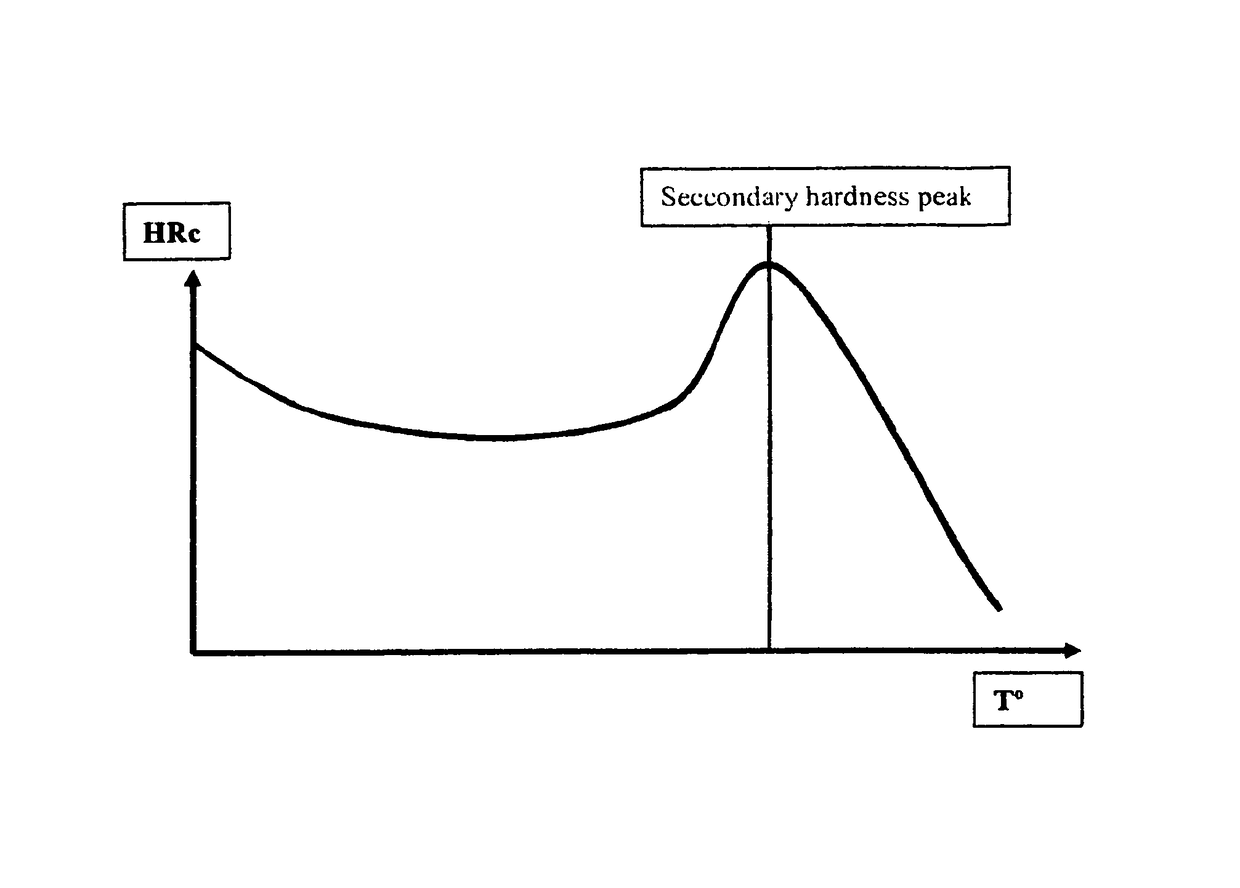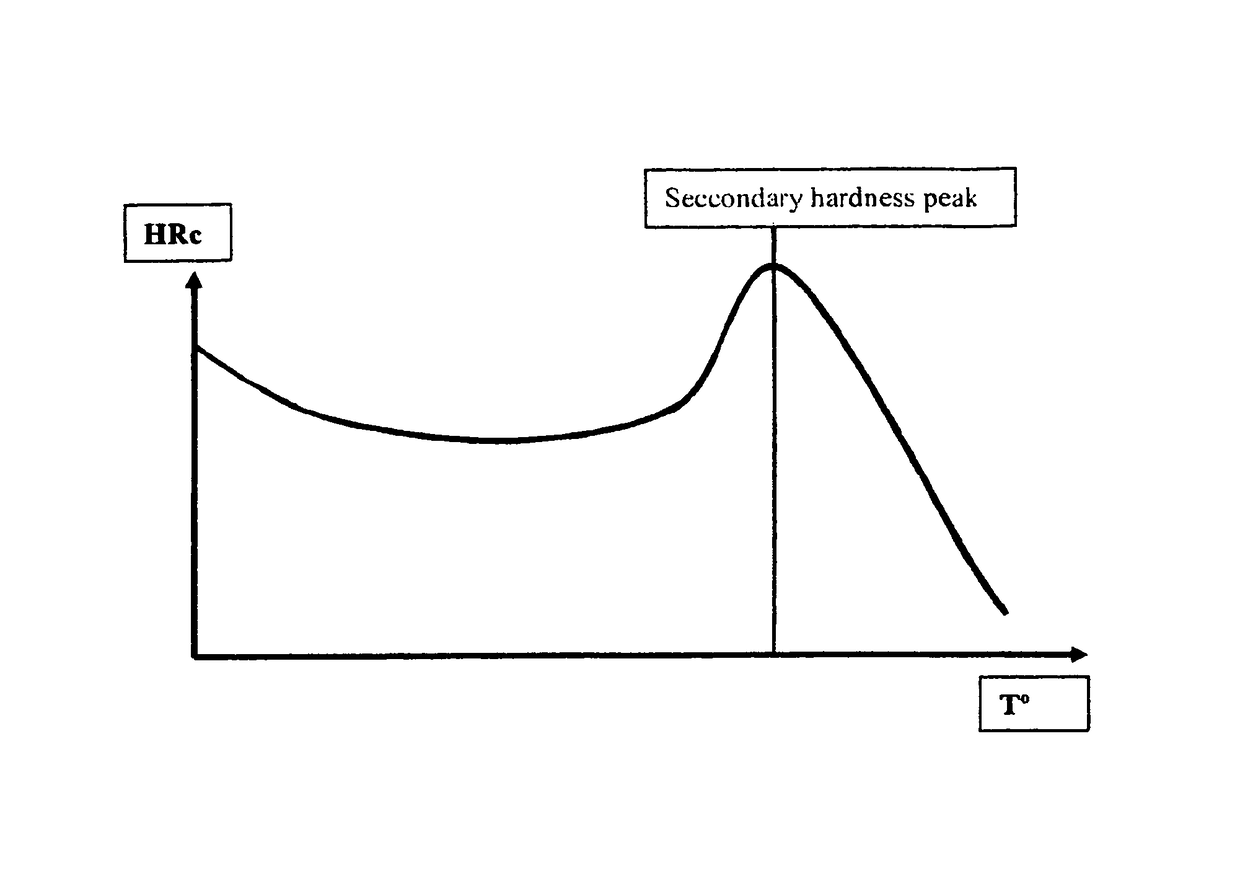Low temperature hardenable steels with excellent machinability
a technology of low temperature hardenable steels and excellent machinability, which is applied in the direction of heat treatment equipment, manufacturing tools, furnaces, etc., can solve the problems of low hardness of mixed microstructures with bainite and martensite, inability to achieve pure martensitic microstructures, and inability to achieve such a microstructure. , to achieve the effect of high hardness, low hardness for machining, and high hardness
- Summary
- Abstract
- Description
- Claims
- Application Information
AI Technical Summary
Benefits of technology
Problems solved by technology
Method used
Image
Examples
example 1
[0103]High Thermal conductivity steels (over 42 W / mK and over 8.5 mm2 / s and reaching 57 W / mK and 13.5 mm2 / s at 50 HRc, the thermal conductivity and diffusivity increase for lower hardnesses at least until 40 HRc for all steels of the present example), delivered at a hardness of 45 HRc or less and then raising the hardness to above 48 HRc after a great part of the machining has taken place.
[0104]For this purpose in the context of the present invention the following compositional range can be used:
Ceq: 0.3-0.6 Cr<3.0% (preferably Cr<0.1%)
PUM
| Property | Measurement | Unit |
|---|---|---|
| Fraction | aaaaa | aaaaa |
| Fraction | aaaaa | aaaaa |
| Fraction | aaaaa | aaaaa |
Abstract
Description
Claims
Application Information
 Login to View More
Login to View More - R&D
- Intellectual Property
- Life Sciences
- Materials
- Tech Scout
- Unparalleled Data Quality
- Higher Quality Content
- 60% Fewer Hallucinations
Browse by: Latest US Patents, China's latest patents, Technical Efficacy Thesaurus, Application Domain, Technology Topic, Popular Technical Reports.
© 2025 PatSnap. All rights reserved.Legal|Privacy policy|Modern Slavery Act Transparency Statement|Sitemap|About US| Contact US: help@patsnap.com


